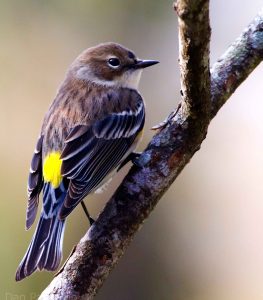
Everyone who is aware of the birds that breed in North American woodlands and prairies knows that our lands are hosts to a delightful array of little songbirds. They commonly show up searching for insects and bits of vegetative food on the trees and bushes, often flashing wonderful bright colors. Some of the most colorful are warblers. Western Washingtonians delight in the ever-present Yellow-rumped Warblers, the surprisingly dull Orange-crowned (whose crown you cannot see), the Yellow, Black-throated Gray, MacGillivray’s, Wilson’s, Townsend’s even in the winter, and Yellowthroats in the marshes. While searching for their ubiquitous insect food, they mostly display the bright yellows copyrighted by their family, but have the most uncooperative habit of slipping behind clumps of leaves just as you’re trying to get them in your binocular field. Those of us with good ears find them by voice and delight in their songs, such as the Yellow’s sweet-sweet-sweet, I’m so sweet.
But the same habitats are also home to another family, the vireos. They differ from warblers in several ways important to birders. For instance, while warblers appear nervous, always moving quickly, vireos are slower, more deliberate as they forage in trees and bushes. A brief study of the plates in your field guide will show how very plain they are in contrast to bright warbler plumages, several with a wingbars-and-spectacles pattern or with prominent eyestripes. Feeding on insects, they sometimes fly out to grab one out of the air, but also feed on berries. Kenn Kaufman notes that male vireos are persistent singers who repeat their monotonous songs endlessly, even in the heat of the day or while incubating eggs in the nest.
Warblers feel like expected and always appreciated delights of a spring birdwalk, but somehow spotting a vireo makes the walk special and memorable. (by Burt Guttman, Photo – courtesy Dan Pancamo)







